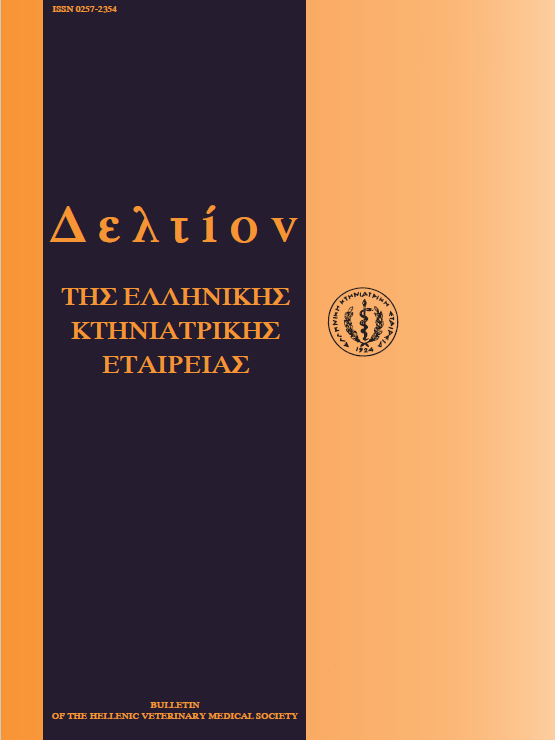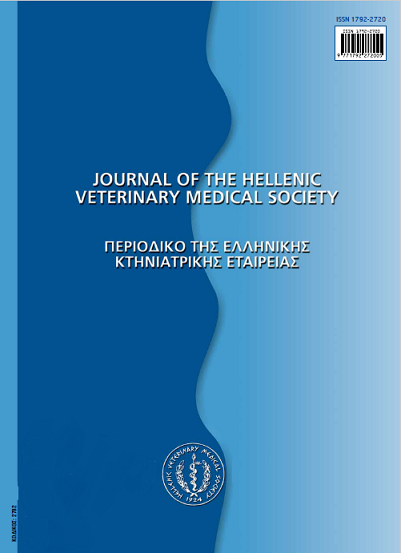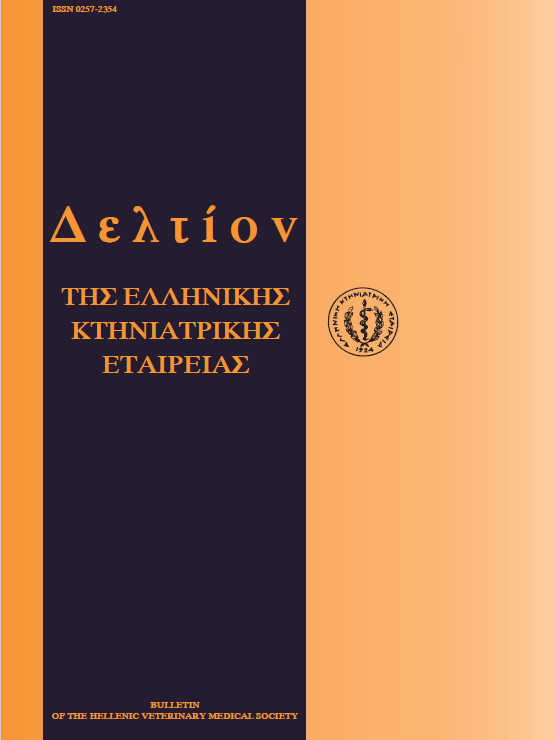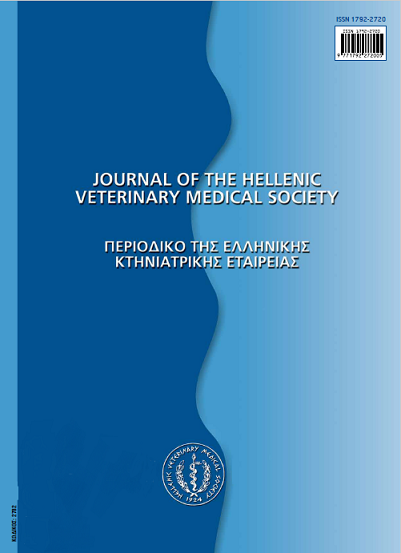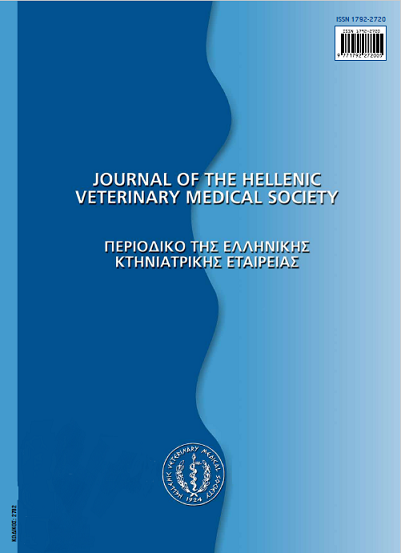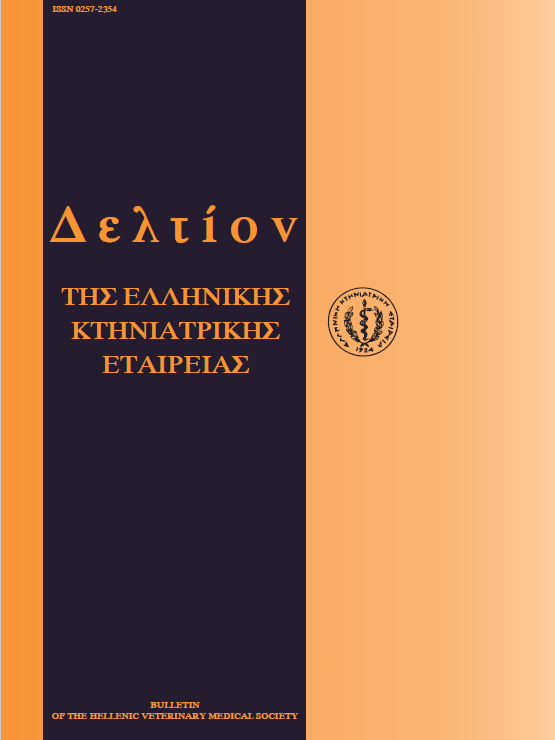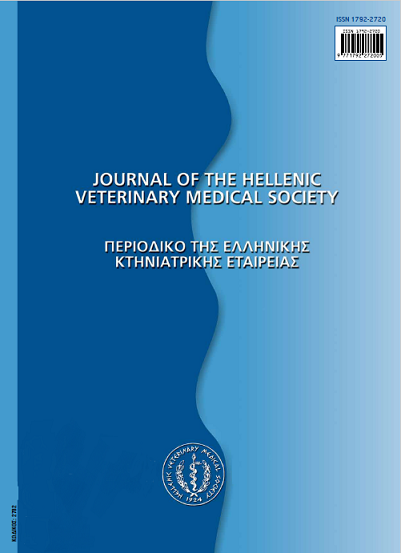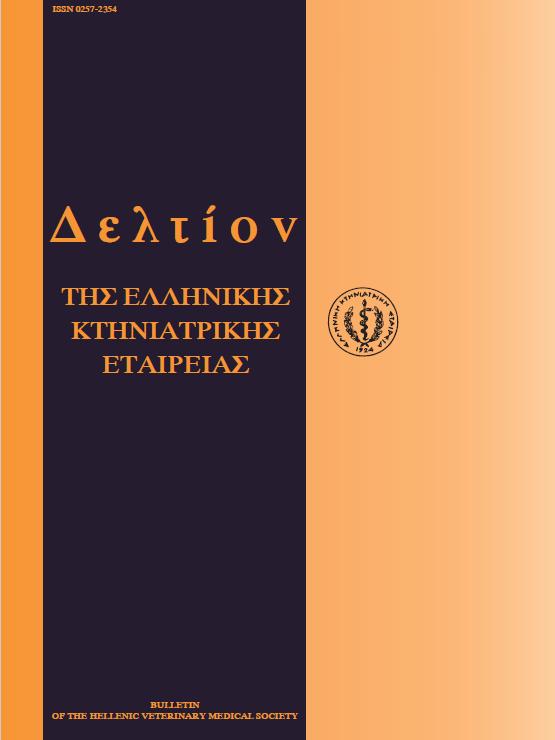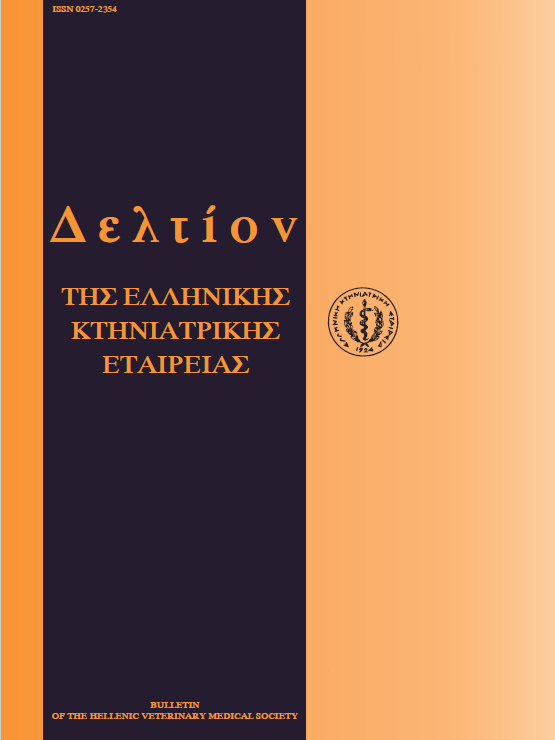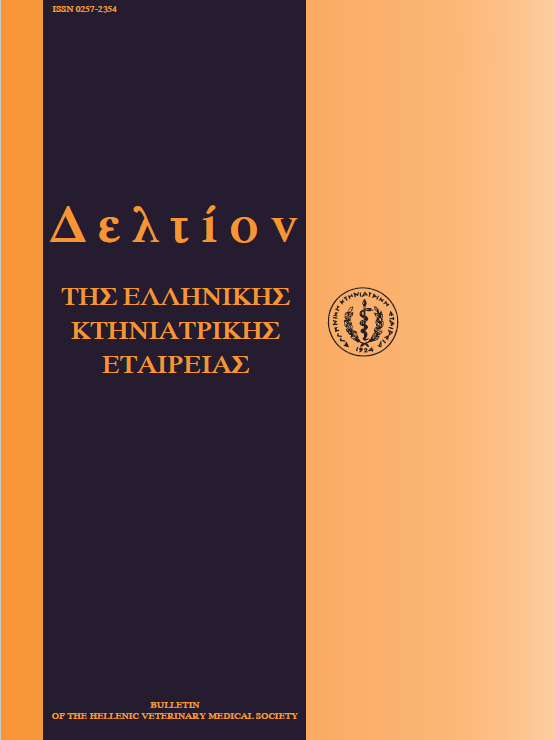Laparoscopie collection and transfer of Chios sheep embryos
Abstract
The efficiency of two different laparoscopic techniques for embryo collection was examined. Two groups (A and B) of 12 Chios breed ewes were used as donors and 20 crossbred Chios ewes as recipients. Oestrus was synchronised by intravaginal sponges, the donors were supervoulated by 8,8 mg of ovine FSH and laparoscopic intrauterine artificial insemination was conducted with extended fresh ram semen. Embryo collection was carried out the 6th day after AI. The uteri of the animals of group A were flushed after catheterisation of the ipsilateral oviduct. In the animals of group Β a flushing catheter was inserted close to the tip of the horn. Fifty nine and 46 embryos were collected from groups A and Β corresponding to recovery rate of 51.75% and 39% respectively (P>0.05). Laparoscopic transfer of 43 fresh embryos resulted to 11 (55%) pregnancies with (39.5%) surviving fetuses.
Article Details
- How to Cite
-
AMIRIDIS (Γ.Σ. ΑΜΟΙΡΙΔΗΣ) G. S., KUEHHOLZER, B., BESENFELDER, U., LYMBEROPOULOS (Α. ΛΥΜΠΕΡΟΠΟΥΛΟΣ) A., & VAINAS (Ε. ΒΑΪΝΑΣ) E. (2018). Laparoscopie collection and transfer of Chios sheep embryos. Journal of the Hellenic Veterinary Medical Society, 50(3), 244–249. https://doi.org/10.12681/jhvms.15717
- Issue
- Vol. 50 No. 3 (1999)
- Section
- Research Articles

This work is licensed under a Creative Commons Attribution-NonCommercial 4.0 International License.
Authors who publish with this journal agree to the following terms:
· Authors retain copyright and grant the journal right of first publication with the work simultaneously licensed under a Creative Commons Attribution Non-Commercial License that allows others to share the work with an acknowledgement of the work's authorship and initial publication in this journal.
· Authors are able to enter into separate, additional contractual arrangements for the non-exclusive distribution of the journal's published version of the work (e.g. post it to an institutional repository or publish it in a book), with an acknowledgement of its initial publication in this journal.
· Authors are permitted and encouraged to post their work online (preferably in institutional repositories or on their website) prior to and during the submission process, as it can lead to productive exchanges, as well as earlier and greater citation of published work.

